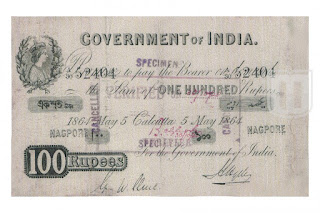It is a very sorry state to see that we, as Indians are drifting away from our own cultures and traditions at a very fast pace. The influence of western culture on the young generation has deeply affected our heritage. There is a need to make youngsters aware about our country's richness, be it history, personalities, wildlife, or regional traditions, music, art and literature. Stamps of India represent this cultural diversity in the most beautiful way. Although, writing letters has become obsolete with the advent of technological advances in the field of communication, stamp collecting is a hobby that still survives.
Nurture Young Minds:
There is a need to encourage more and more youngsters to pursue this amazing hobby. When kids are introduced to various kinds of Indian stamps, they will get a fair idea about the important aspects of our country. After Independence, India Post has released so many wonderful stamps covering numerous themes and subjects, that you will be truly mesmerised! Children can be asked to pick up a theme of their choice and start collecting stamps in India. This will increase their general knowledge about various events from the past and personalities, multi-fold. Apart from that, the process of collecting stamps is joyous, not like reading boring school textbooks. Students will willingly want to learn about the imagery featured on stamps of India. Philately in a way, introduces a fun way to educate oneself about India's pride.
Problem with current education system:
There is no point forcing students to study just for the sake of scoring good marks in examinations. The education system in India itself needs to be revamped by making use of innovative learning tools and mediums. Philately is definitely one of those innovative tools indeed. There is no question of mugging up answers when students do their research on their own. Understanding concepts become much simpler when you are personally interested in learning something new. Moreover, things that you learn this way stay fresh in your memory for a long period of time. Education shouldn't be ideally restricted to only scoring good marks. Education is all about being aware and gaining more knowledge. Most parents pressurise their kids to score well thinking that good marks would fetch them a good job in the future. Instead they should take the initiative for helping them in collecting rare Indian stamps. When parents show kids a new exciting way of learning something new, children are quick to grasp the concepts.
The perfect website to learn about Indian stamps:
Finding the right kind of information is also essential when it comes to researching about Stamps of India. There are several websites out there where you will find data about different kinds of rare Indian stamps. The only problem with many of these websites is that the information is not well-categorised or formatted. Mintage World is a one-of-a-kind website where you will not face this problem at all. All the information you need about any Indian stamp is listed in an organised fashion. All you have to do is select the necessary category and search for data related to stamps of India based on various parameters like issue date, theme, subject etc. It is a perfect online reference guide for anybody who is looking to make an impressive collection of Indian stamps. Even if the school curriculum does not have stamp collecting as a subject, as parents you can always show your children this website from where they can gain knowledge about different kinds of Indian stamps.
It's never too late:
If you are thinking that stamp collecting is only for kids then you are wrong. There is no age to start learning something new. Collecting different stamps of India keeps you excited always. You also get a chance to meet likeminded individuals and collectors in your journey. When you network with new people, the chances of finding a new rare Indian stamp become much higher. There are some collectors who took up this hobby at a very later stage in life. The most fascinating aspect of this hobby is that there is something to look forward to in life apart from your daily mundane activities. When you go back home after a hard day at work, you can spend some good time gazing at your lovely collection of Indian stamps and reading about the subjects presented on them. The hobby keeps your mind busy in something fascinating and keeps you away from all your troubling worries. In this day and age when stress is something that you cannot avoid, collecting rare stamps of India can act as the perfect de-stress button. Also, when you have nothing to do after retirement, the hobby helps in keeping your mind active!
Stamp collection is so easy that you won't have to rack your brains to get started. Simply go to the nearest post office and check out the latest stamps of India released by India Post. No matter if you are old young, stamp collection is for each and every one! Start collecting Indian stamps right away!
Read why collecting stamps of India doesn't just increase the knowledge-base of kids but also spices up your life as you are growing older!








